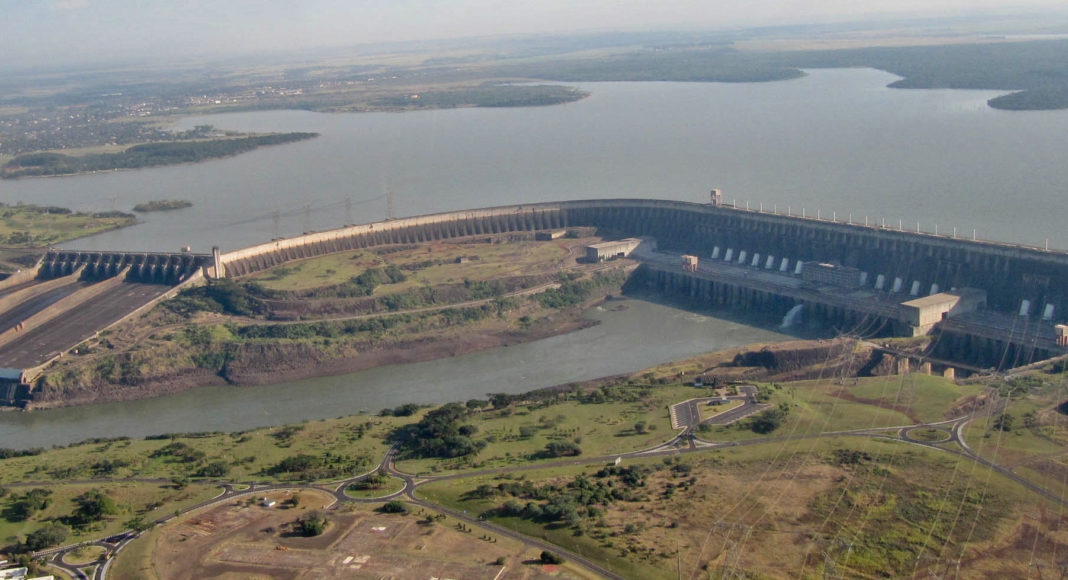 While in Paris in mid-March 2014, Sônia Guajajara, President of the Coordination of Indigenous Peoples of Brazil (APIB) and leader of the indigenous resistance, said: “We are in a tragic situation and our rights are seriously threatened. The Brazilian government achieves its economic development goals by violating its own laws, Brazil’s laws.” According to her, the Belo Monte hydroelectric dam, currently under construction, and the dams being planned along the Tapajós river, are being built without any real consultation with indigenous peoples, even though both the Brazilian Constitution of 1988 and the International Labour Organization (ILO)’s Convention 169 (of which Brazil is a signatory) guarantee the right to such a consultation.
While in Paris in mid-March 2014, Sônia Guajajara, President of the Coordination of Indigenous Peoples of Brazil (APIB) and leader of the indigenous resistance, said: “We are in a tragic situation and our rights are seriously threatened. The Brazilian government achieves its economic development goals by violating its own laws, Brazil’s laws.” According to her, the Belo Monte hydroelectric dam, currently under construction, and the dams being planned along the Tapajós river, are being built without any real consultation with indigenous peoples, even though both the Brazilian Constitution of 1988 and the International Labour Organization (ILO)’s Convention 169 (of which Brazil is a signatory) guarantee the right to such a consultation.
GDF Suez, Alstom and EDF involved
“French companies are involved in some of these projects and they are thus contributing to the violation of people’s rights and the greatest environmental disaster ever experienced in the Amazon”, said Sônia Guajajara. “GDF Suez and Alstom are playing a role in someof the most criticised projects — Jirau, Santo Antonio, Belo Monte. As for EDF, it has bid for work on a proposed hydroelectric complex on the banks of the Tapajós river”, continued Olivier Petitjean, from the NGO, Multinationals Observatory. “These companies have refused to meet Sônia Guajajara. GDF Suez is the only one that replied to us but it did not want to take any responsibility and blames the Brazilian government [which authorized these projects].” Sônia Guajajara headed a rally of about a hundred people outside the headquarters of the three companies in La Défense in Paris, on March 14, the International Day of Protest Aboutt Rivers and Dams.Belo Monte, symbol of the struggle
Under construction since June 2011, the Belo Monte dam is located in the heart of the Amazon, on the Xingu river. It is supposed to open up a poor and marginalised region and should satisfy 11% of the country’s energy needs by 2020. It is one of many projects in the Brazilian Programme of Accelerated Growth (PAC) and will become the third largest hydroelectric dam in the world, with a production of 11,000 MW per year. It is strongly criticized by environmental groups and indigenous movements. Indeed, some parts of the river may dry up, resulting in a sharp decline in biodiversity, while a vast land area, about 600km2 in size, may be flooded. In addition, associations defending indigenous populations claim that 20,000 people will be displaced by the dam (while the government puts the figure at only 10,000). Another hydroelectric complex, involving the construction of at least five dams, providing about 10,700 MW per year, is planned along the Tapajós river. Sônia Guajajara and other organizations defending indigenous peoples say they face obstacles when trying to express their opinion on these major projects: “Sites have been militarized, laws have been passed to ensure that journalists can no longer approach the localities. To organise demonstrations on those sites has become impossible,” warns Gert-Peter Bruch, president of Planet Amazon. As for holding companies to account , “the possibility of challenging them is even more limited than in France ,” says Olivier Petitjean. The battle over Belo Monte has been going on since the late 1980s. Since the early days, work on the project has been repeatedly halted by opposition protests or by decisions of the federal court, but it has recommenced each time. In August 2012, a federal district court ordered a halt on work on the ground, because Indians living in the region had not been consulted. But fifteen days later, the Brazilian Supreme Court decided that work should recommence, finding in favour of Brazil’s Attorney General, Luis Inacio Adams. In July 2013, indigenous leaders, including Sônia Guajajara, held a meeting with President Dilma Rousseff, which ended with the signing of a text recognizing the rights of indigenous peoples. But that has not stopped the projects.The original article in French can be found here. It was translated from the French for LAB by Maria Grazia Gargano.

